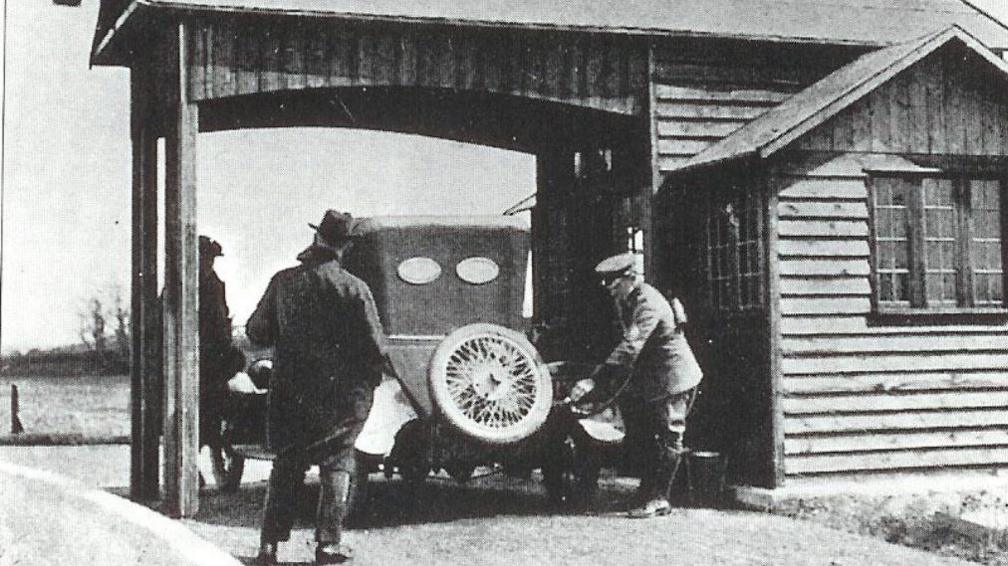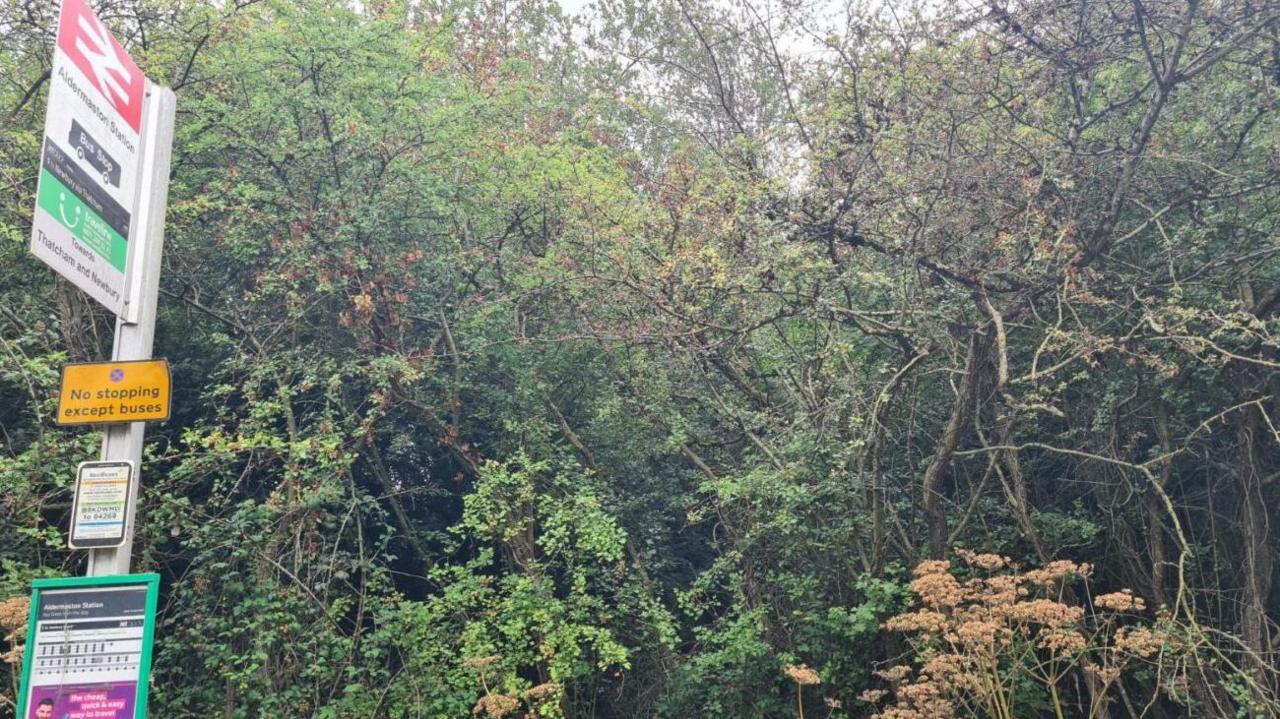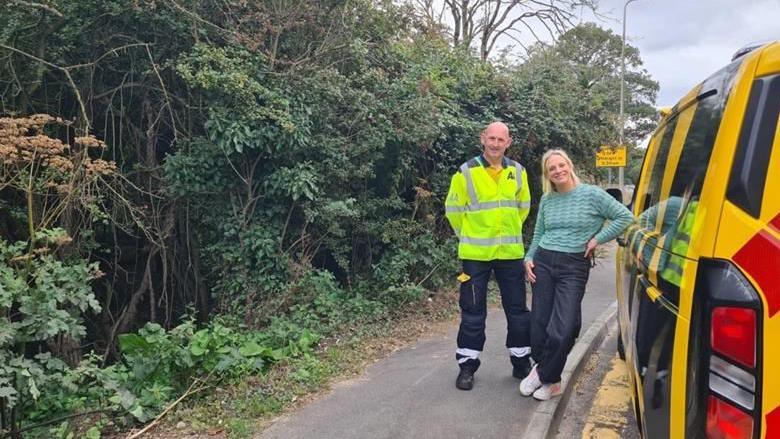Filling up: England's first roadside petrol station

In 1919, England's first petrol station opened in Berkshire, manned by uniformed AA patrolmen
- Published
By the side of a busy major road running through the heart of Berkshire, sits an ordinary layby surrounded by undergrowth, nettles, brambles and trees.
The only thing marking the spot to the cars and lorries whizzing past is a railway and bus signpost for services between Newbury and Thatcham.
But just a few feet away on this stretch of the A4 Bath Road, near Aldermaston, once stood England's first petrol station.
Opened by the Automobile Association (AA) in 1919, motorists were served at the filling station's single hand-operated pump by the organisation's uniformed patrolmen, according to English Heritage.
Radio Berkshire's Kirsten O'Brien went along to meet Andy Smith, part of the AA's heritage team, to find out more about the historical significance of the site.

There is little at the site today to indicate its important place in history
More than 100 years ago, before the M4 existed, the A4 was already a "very busy" route, said Mr Smith, explaining why it was chosen as the location.
The UK used to import some fuel from Russia but in the aftermath of the 1917 Russian Revolution, this trade was viewed in England as tantamount to supporting the Bolsheviks.
"So the AA teamed up with British Benzole to supply 'patriotic fuel', as it was referred to, to try and encourage people to buy fuel from the UK," Mr Smith said. "That's where it all began."
"There was was a very small forecourt, enough for one car to pull in, a small building with a canopy, an underground tank or a bowser, and one man and a pump, stood there waiting to put petrol into cars."
Before that, motorists would purchase small amounts of fuel in a glass or tin can from an ironmonger, blacksmith or general store, he said.

The AA's Andy Smith told Kirsten O'Brien more about the location's significance
The Basingstoke-based AA had only been formed 14 years earlier, in 1905.
"A group of men got together in the Trocadero in London's Piccadilly Circus and formed a club - the idea of the club was to protect motorists from police speed traps at the time. That's how we began," said Mr Smith.
"An AA scout would hide in the bushes. If he knew there was a policeman around the corner with a stopwatch, he would flag down the AA member and warn them of the impending speed trap."
The first AA patrols or scouts travelled first by bicycle, then motorcycles and sidecars.
As it evolved, the AA began to work more "with the police than against them", he said, adding: "And we became more about helping motorists at the roadside."
In 1910, an AA patrol was successfully prosecuted for hindering police in the line of duty, he said.
"I think that was probably the turning point where we decided maybe we can help motorists - but for the right reasons, not the wrong reasons."
The UK’s First Petrol Station
AA patrolmen became known for their traditional salute to acknowledge members, indicated by an AA badge on a car grille.
The custom of saluting ended in 1962, the same year yellow AA vans began to replace patrol motorcycles.
"These guys that were riding motorcycles all year round suddenly had a roof over their head", Mr Smith said.
"When the patrolman was on a motorcycle he could easily salute, he could raise an arm.
"If a car came towards him displaying an AA badge, then they would be saluted.
"When the minivan came along, it was quite hard work to salute in a minivan."
Secret Berkshire
Explore fascinating stories from Berkshire
Listen and subscribe for the latest episode of Secret Berkshire
Get in touch
Do you have a story BBC Berkshire should cover?
You can follow BBC Berkshire on Facebook, external, X (Twitter), external, or Instagram, external.
- Published26 June
